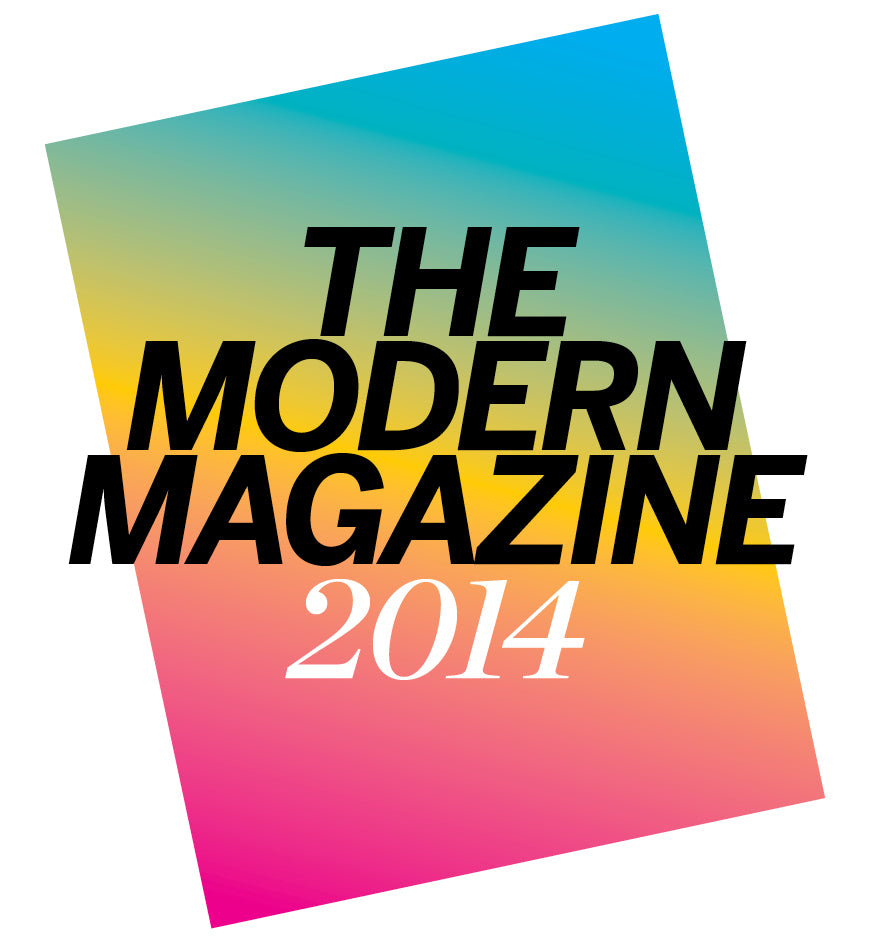
The Modern Magazine 2014 – part 1
Jeremy opened the second Modern Magazine conference (#modmag14) by asking questions: Where will we be in ten years time? Should mainstream publishing be looking to the independent magazine scene to learn and develop what they are doing? Can content marketing work? Can you make great editorial to support brands?

Rob Orchard, of Delayed Gratification (@dgquarterly), kicked off the day with a witty look at the news media landscape. The slow journalism magazine is now in its fifteenth issue and Rob spoke about four things – why they launched, what they do, what they’ve learned and where they are going next.
Firstly, DG wanted to champion print. They launched during a time when everyone was saying print was dead, ‘a lot of print magazines were being designed to look like and behave like the web. We wanted to produce a magazine that had beautiful high production values, used quality paper, and had that lovely smell’. News will always be behind and cannot keep up with the internet, there is too much space to fill which will force speculation and false controversy to fill space and news media moves en masse, never returning to places and people in the aftermath to reconsider a series of events. Lastly, Rob criticised that news media values being first more than being right.
His advice for those wishing to launch their own magazine was to have principles and be willing to bend. Have fun, don’t make it too hard for readers and don’t make it too hard for yourself – “Sometimes three months isn’t long enough”, “PayPal subscriptions suck”, “People will call you out on your mistakes”.
Next, Delayed Gratification is working on licensing deals in Seoul, developing four documentaries based on four stories from the last four years, are looking to add graphic novel journalism to the magazine and publish their first 10,000 word feature.

Next to the stage was Kai Brach of Offscreen (@kaibrach @offscreenmag) with a talk entitled ‘A tangible experiment’ that followed how a “strange idea” turned into a full-time job. As a German Web designer living and working in Australia, Kai realised his life’s work could be erased with one click. As a response to the idea of digitally thin and humanly thin online experiences, he order an around the world ticket and met face to face with people who he’d had contact with through social media. “It helped to de-idealise these people” and without connection to the phone and internet, he “rediscovered ‘the edges of print’, the joy of entering and exiting a text and closing a book when you finish. It was away from the internet of hyper connectivity where you never meet the edge.”
Kai de-mystified the process of producing a magazine and walked the audience through the story of Offscreen and was open about failures, finances and successes that he also made available to his blog readers throughout which has created a community-driven readership that continues to support the mag. “I’m not creating anything you couldn’t find in podcasts, blogs, ebooks etc. But in paper it becomes more real.”
After a failed a Kickstarter campaign, he decided to self-fund. He made a content plan, set up Google docs to send out individual briefs to writers and creatives and liaised long form interviews between people. He hired a freelance proofreader, took submissions from photographers and relearned InDesign using Lynda. Lastly, he scratched the distributor from the sales model and sells 80% of issues directly from the website. Kai, like other indy mag makers, praised his printer in Berlin, who “held my hand through the first issue from a 1000 miles away.”
At its core, Offscreen is a collection of stories about people: “In order to make a magazine you don’t need a floor of marketeers” … you need people.
In terms of the future, Kai plans to: “Brace for inevitable change in order to survive the pixellated road ahead”.

Veronica Ditting, art director of The Gentlewoman, began by talking about the publishing company behind the mag – Butt and Fantastic Man, their art director Jop Van Bennekom and editor Gert Jonkers. “The logical step would have been to call it Fantastic Woman but it was important that it had its own identity.” The Gentlewoman gets it’s name from a long out of print magazine by the same name; editor Penny Martin said that it was clear what a gentleman was but not a gentlewoman which gave them scope.
The biannual is designed to connect to the spirit of the Bauhaus and uses Futura for its masthead. “We commission everything and print nothing that has been published before” said Veronica.“You can only make a magazine with a team, never all alone, and brutal honestly is at our core, Dutch people are very straight forward.”
Slides showed the growth of the publication: “It kind of came together both in design and editorial in issue three when we also changed to uncoated paper. It became the right kind of object” and the introduction of hand-rendered type in issue five, something Veronica had experimented with since her earliest sketches for the design. “After searching for typefaces based on handwriting , Jop said I had nice handwriting and so I spent hours writing Paris over and over again.”
“A magazine is kind of like a book that you can redo and redo and redo.”
Read Sarah’s later reports from the day;
the-modern-magazine-2014-part-2
the-modern-magazine-2014-part-3
the-modern-magazine-2014-part-4



